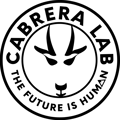We advise that you read Systems Thinking at Every Desk and Systems Thinking Made Simple or take our online or certificate course to get some help with creating your DSRP, but if you want to DIY, this worksheet can help
Step-wise Practice in Map, Activate, and Check (MAC) Systems Education
- Systems Thinking Made Simple
- Thinking at Every Desk
- Step-wise Practice in Map, Activate, and Check (MAC) Systems Education in Google Docs format
- Systems Thinking 101 (ST101) Online Course
- Systems Mapping 201 (SM201) Online Course
- Solin, J. A Systems Thinking-based Approach to Curriculum and Program Design: Map-Activate-Check. In: Derek Cabrera, Laura Cabrera, and Gerald Midgley, editor. Routledge Handbook of Systems Thinking. Routledge; 2021.
- Cabrera, Derek & Cabrera, Laura. (2019). Complexity and Systems Thinking Models in Education: Applications for Leaders.
- CRL, (2016). CRL. Three Steps For Designing Better Learning Experiences: Map, Activate, Check and Activation Continuum., Cabrera Research Lab. [Poster.]10.1007/978-3-319-17727-4_101-1.
- Glossary: Map, Activate Check (MAC)
- FAQ: What is meant by "Building" and "grounding"?
- A Comprehensive List of Educational Resources
Step 1.2 Connect to Standards 4
Step 2.1: Select where on the Activation Continuum you need to focus 5
Step 2.1: Activity? Or, Activities? 8
Step 1. Map IT
When we say “Map IT” we mean map the mental model (M), which includes information content (I) and thinking/structure (T). Thus we are mapping the I and T or ‘IT’ because M=I⨂T. The mental model we map is what we can call the “learning target” because it is the target we want students to be able to hit.
Step 1.1 Map the M=I⨂T?
|
What is the M=I⨂T? |
|
|
What is the Thinking (T)? (i.e., structure) |
What is the Information (I)? (i.e., content, vocab) |
|
Check all that apply
|
Add your content here |
|
Do I plan to make the map explicit to students?
|
If so, put your map here: |
Example:
|
What is the M=I⨂T? |
|
|
What is the Thinking (T)? (i.e., structure) |
What is the Information (I)? (i.e., content, vocab) |
|
Water; Guyot; Trench; Abyssal plain; Continental shelf ; Coral reef; Shallow sea; Ridge; Volcano |
|
Do I plan to make the map explicit to students?
|
If so, put your map here: https://www.plectica.com/maps/HZ2JT31NS/edit/R0T4XS26P |
Now that you know what you want to teach—or more importantly, what you want students to learn—you can go to the next step where you think about how to activate that learning by having learners ground it for themselves.
Step 1.2 Connect to Standards
Is the target of your learning based on an educational standard? If so, we have already mapped the nearly 1200 US K-12 standards. Contact us for the standard and we can share them.
Step 2 Activate IT
Step 2.1: Select where on the Activation Continuum you need to focus
What is the best place on the activation Continuum for this learning? Is it extremely deep, needing a great deal of repeated grounding and experiential learning and reflection? Or, is it relatively straight-forward? Take a look at the continuum of activations below or click here to see the pdf.
|
Where on the activation Continuum will you focus? (select all that apply) |
GROUNDING TO PRIOR KNOWLEDGE and COGNITION
GROUNDING WITH NONLINGUISTIC REPRESENTATIONS (NLR)
GROUNDING WITH EXPERIENTIAL ACTIVITIES
|
Step 2.2: Design Activity
|
Activity 1 Name: |
Add your name here |
|
Description: |
Add your description here |
|
Materials Needed: |
Add materials needed here |
|
Activity Types Used for this Activity: Check all that apply |
GROUNDING TO PRIOR KNOWLEDGE and COGNITION
GROUNDING WITH NONLINGUISTIC REPRESENTATIONS (NLR)
GROUNDING WITH EXPERIENTIAL ACTIVITIES
|
Example:
|
Activity 1 Name: |
Build DSRP Map and clay geological model |
|
Description: |
|
|
Materials Needed: |
tupperware, blue dye, 5 packets white model magic, paper, gluestick, scissors |
|
Activity Types Used: |
GROUNDING TO PRIOR KNOWLEDGE and COGNITION
GROUNDING WITH NONLINGUISTIC REPRESENTATIONS (NLR)
GROUNDING WITH EXPERIENTIAL ACTIVITIES
|
Step 2.1: Activity? Or, Activities?
You may want to design several activities for any given lesson or you may be Mapping an entire segment or semester which will include dozens of activities or more. Feel free to make copies of the Activity table above to add additional activities.
Step 3: Check IT
|
Check 1 Name: |
Add your check here |
|
Description: |
Add description here |
|
Materials Needed: |
Add materials needed here |
|
Look fors: |
|
|
Options: (select all that apply) |
|
|
Linked to Activity/Activities: |
List the Activities this Check is linked to |
|
Attachments: |
Links to relevant material |
Example:
|
Check 1 Name: |
Model Competition |
|
Description: |
Ask pairs to write down five point rating on all Look fors for their model. Students co-present geological models they built to whole class. Class gives five point finger rating on each look for. Have one student be counter for totals. Compare self-check vs class-check numbers in private with student pairs. |
|
Materials Needed: |
Paper/pencil to record ratings |
|
Look fors: |
|
|
Options: |
|
|
Linked to Activity: |
Build DSRP Map and clay geological model |
|
Attachments: |
|
